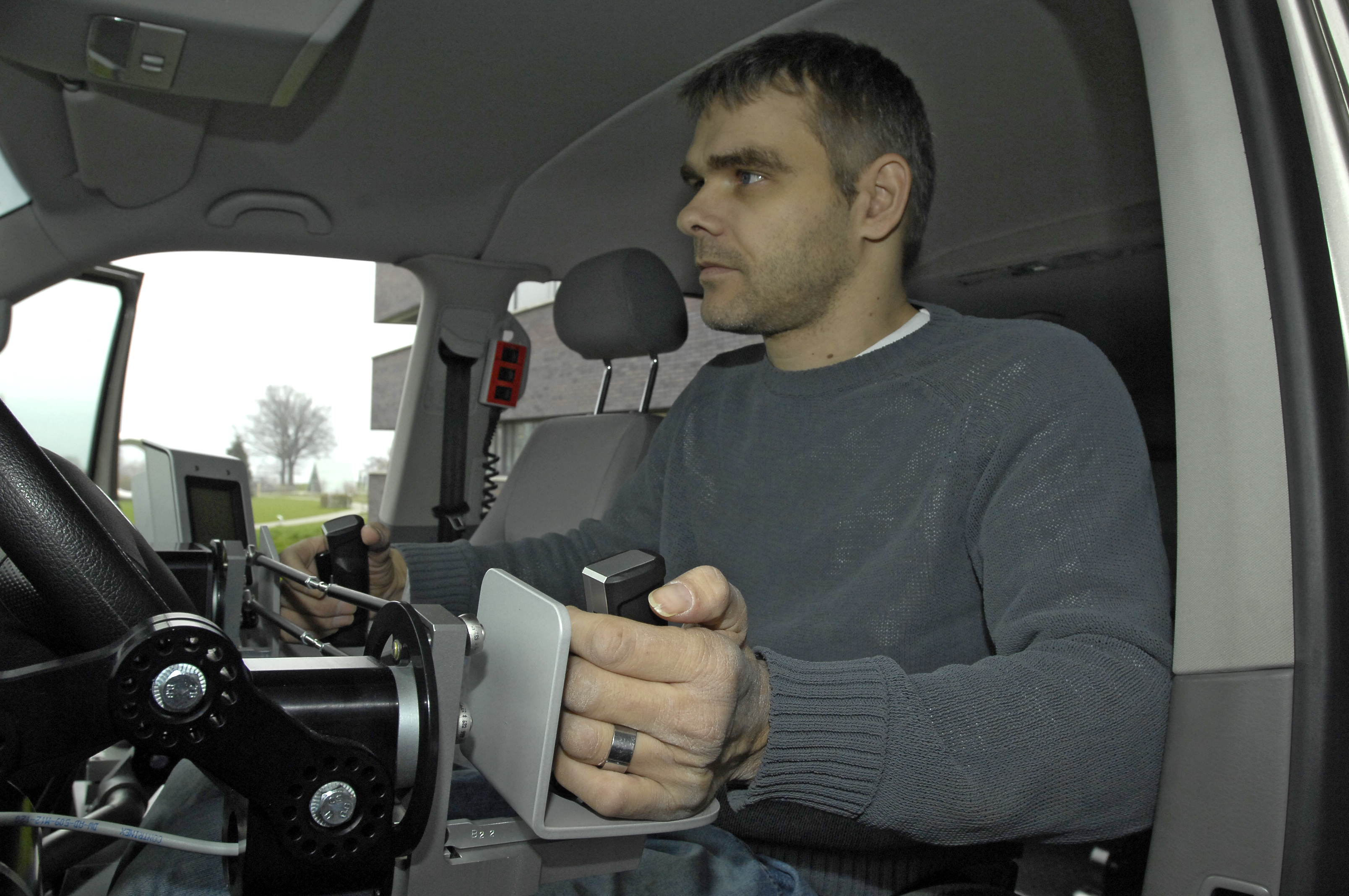joysteer, the electronic driving system for people with physical disabilities, was originally a spin-off company of Bern University of Applied Sciences BFH. As the holder of the patents for joysteer, Bozzio Ltd develops and markets individually adaptable control elements based on drive-by-wire technology.
What a nice office you have here. Spacious, with a terrace and a view of the river Thielle. When did you move in? And why into Switzerland Innovation Park Biel/Bienne (SIP BB)?
We moved into SIP BB in late 2015. The infrastructure was actually a major deciding factor, but more in terms of the benefits SIP BB could bring to our company: a mechanical lab, an electrical lab, 3D printers and development services – all under one roof. Plus, a lovely office and nice colleagues!
Does that mean you actually collaborate with SIP BB or other companies renting office space here?
Yes, quite regularly. Since we don’t have any engineers of our own or the aforementioned infrastructure, we take advantage of the resources offered by SIP BB and its tenants.
Can you give us an example?
We were tasked with designing a custom-built brake pedal for a car. A SIP BB engineer designed it according to our specifications so a plastic prototype of it could be created using a 3D printer. Once the plastic model was in line with our requirements, we commissioned another tenant in SIP BB – a 3D metal printing expert – to manufacture the brake pedal. Without their cooperation, we wouldn’t have been able to make this component.
joysteer is an electronic driving system. What does “drive-by-wire” mean?
This means that the steering is controlled by hardware and software rather than the steering column. Drive-by-wire technology also forms the basis for autonomous vehicles. Here, GPS and sensor data are transmitted to the drive-by-wire system, which then controls the steering.
joysteer is not something that can simply be ordered and fitted like a car stereo. Who gets it, who makes the decision and who pays?
A physically disabled person wanting to be more mobile must go through a number of processes. Various control elements are available depending on the disability. First, a specialized driving instructor carries out an assessment to ascertain whether the person is actually able to operate the driving system. A positive assessment can lead to an application being submitted to the health care insurer covering the costs, who will in turn consider the relevant benefits the applicant is likely to derive from the system – such as professional and social integration. Once the application has been approved, it’s over to the driving instructor. Depending on the severity of their disability and whether they already own a driver’s license, the person must take 30 to 50 driving lessons before sitting their test. Both the vehicle and the joysteer electronic driving system are then ordered. The applicants actually pay for the vehicle themselves. The health care insurer covers the cost of conversion. Our dealer is often the Swiss Paraplegic Centre in Nottwil. They order from us and carry out the installation themselves.
You came on board in 2009. How come?
joysteer was developed at the BFH under the auspices of four research assistants. When the time came to turn it into a start-up and launch it onto the market, I was asked to manage the project. I already had business experience and had been planning to set up a start-up for some time. Plus, I was sure it wouldn’t be all that difficult to raise the funding for such a great product. I may have been slightly overoptimistic in that respect ...
Not so easy after all?
Naturally, everyone thinks the driving system is great, but only few are willing to invest in such a niche product. Two worlds collide: the emotional world, in which people see which doors our system can open up for the physically disabled; and the financial world, where investors want to see profit, a return on their investment.
But you have achieved success!
How would you define success? Let’s just say we’ve conquered the valley of death. We have, in fact, been doing this for a long time now rather successfully, and have managed to survive on our business revenue without the need for external funding. Not many start-ups can say the same. Bozzio Ltd now has 8 employees, and, taking into account the value added by our sub-suppliers, we have created approximately 15 jobs. Globally, we have successfully launched joysteer onto the market in Europe, New Zealand and the US.
What is the situation on the US market?
There is huge potential for us on this market. joysteer is generating a great deal of interest among experts such as therapists, driving instructors and vehicle converters. Launching it onto the market, however, requires patience, as we are faced with a number of hurdles – from installation, approval and funding to maintenance and servicing. We’ve been working on it for almost six years now. The level of support required is much greater for the US than for Europe.
Do you have to tailor product information to the US market, true to the microwaved-dog tale?
Yes, to avoid being exposed to such claims for damages – like the famous dog that got dried in the microwave because there was nothing in the instructions forbidding it – we have tailored product information and also taken out the relevant insurance cover.
What’s your vision for the future?
Bozzio Ltd will come a long way from being just a producer of electronic driving systems for people with physical disabilities. We will develop industrial applications for special-purpose, autonomous and unmanned vehicles, too – such as for agricultural machinery, construction machinery or defense and city vehicles.
This summer, we are heading to the UK to take part in a pilot project for autonomous vehicles.
One thing is for sure, though: Bozzio Ltd will never become a mass manufacturer for autonomous vehicles. The big original equipment manufacturers will be the ones offering this technology.
Will joysteer always be Swiss-made?
As long as I’m on board, for sure.

Joysteer
